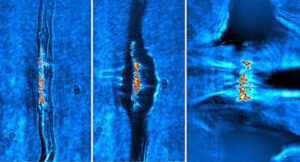Say hello to the first new SI prefixes since 1991. At the humongous end of the scale, ronna and quecca now denote 1027 and 1030 respectively. Apparently, the mass of the Earth is six ronnagrams, or 6 Rg. At the miniscule end of things ronto and quecto denote 10-27 and 10-30 respectively.
The new prefixes were announced today at the General Conference on Weights and Measures, which is being held near Paris. As well as giving nice and simple numbers for the masses of planets, the large prefixes will probably come in handy for describing the vast and growing amount of data that is being created by the Internet. So, get ready for the ronnabyte. Indeed, some people have already been called 1027 bytes a brontobyte or a hellabyte, much to the horror of metrologists – and this is rumoured to be one of the reasons behind the announcement.
As for the ronto and quecto, it has been suggested that they could be used to describe extremely weak phenomena such as the cosmic microwave background that permeates the universe
Physics of splatter
I do love mayonnaise on a sandwich, but I have learned the hard way to stand well back when squeezing the sauce out of the bottle – especially when the bottle is getting close to being empty. But I must admit that I have never thought about the physics behind sauce splatter – until now.
That’s because Callum Cuttle and Chris MacMinn at the University of Oxford have just published a paper about why a smooth flow of liquid can suddenly become an annoying splatter. The duo did experiments where bubbles of air were injected by a syringe into an oil-filled capillary tube.
“Our experimental system is simple, but it replicates all of the essential parameters of a more complicated system, such as a squeezy ketchup bottle,” explains Cuttle. Pressure was exerted on the oil and bubble mixture, causing it to flow through the tube. At low driving pressures, the mixture flowed smoothly thorough the tube – so no splatter when the bubbly oil emerged. However, at higher pressures, friction inside the tube resists the flow and the air bubbles become compressed – storing up energy, and trouble. When a compressed bubble exits the tube, it can expand rapidly causing splatter to occur.
“Our analysis reveals that the splattering of a ketchup bottle can come down to the finest of margins: squeezing even slightly too hard will produce a splatter rather than a steady stream of liquid,” Cuttle concludes.
The duo describe their findings in a preprint on arXiv.













